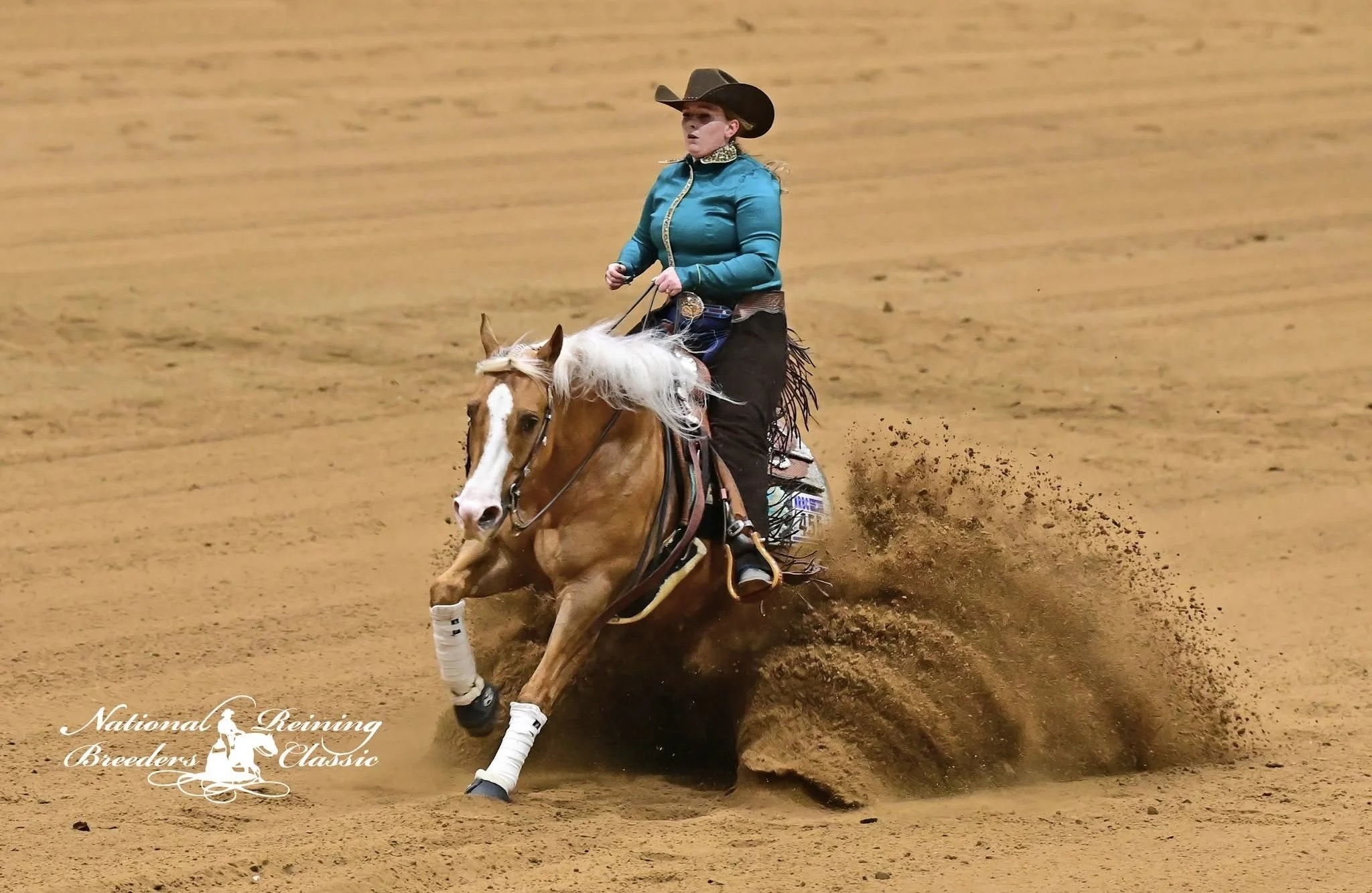
About NRBC
The National Reining Breeders Classic (NRBC) was established in the fall of 1997 by a forward-thinking group of reiners, including Tom McCutcheon, Tim McQuay, Colleen McQuay, Pete Kyle, Dick Pieper, Carol Rose, Gary Putman, and Robert Chown. Early team members also included Mike Christian and Cheryl Magoteaux-Cody. Today’s NRBC Board of Directors is comprised of Tom McCutcheon, Tim and Colleen McQuay, Pete and Tamra Kyle, and Dell Hendricks.
Launched in April 1998 in Guthrie, Oklahoma, the NRBC began with over $210,000 in payouts and quickly established itself as a cornerstone of the Reining world. In 1999, payouts climbed to $345,000. The event also became a qualifier for the first USET Reining Championship and served as a stage for innovative opportunities for Reining.
The event’s move to Katy, Texas, in 2001 marked a turning point, with explosive growth pushing payouts to over $646,000 that year and topping $700,000 in 2002. In 2005, the NRBC broke the $1 million mark, introducing live streaming, television coverage, and pioneering classes such as Prime Time and Rookie Professional.
Committed to accessibility and community impact, the NRBC expanded to include youth scholarships, family-friendly programming, and partnerships with causes like Rein In Cancer, American Quarter Horse Association, American Paint Horse Association, and The Run For A Million. It supported all competition levels—from short stirrup riders to elite professionals. The NRBC gained national attention in 2019 as the setting for the reality series The Last Cowboy. Even amid the 2020 pandemic, the show surged in partnership with the Tulsa Reining Classic, breaking participation and payout records.
By 2022, the NRBC had distributed over $26 million. After twenty years of great success at Great Southwest Equestrian Center, the event outgrew the facility making a 2023 move to the Built Ford Tough Livestock Complex in Tulsa, Oklahoma. The move brought 1,645 stalls and over $1.36 million awarded. That growth continued in 2024, with payouts surpassing $1.7 million and continuing to climb.
Now celebrating 28 years of excellence, the NRBC has paid out over $31 million, cementing its status as one of the most prestigious and innovative events in the sport of reining. Under a new management team led by Jeanna Schaffhauser for the 2026 event, the event is expected to offer classic NRBC signatures and new developments as it reaches toward its 30th year anniversary around the corner.